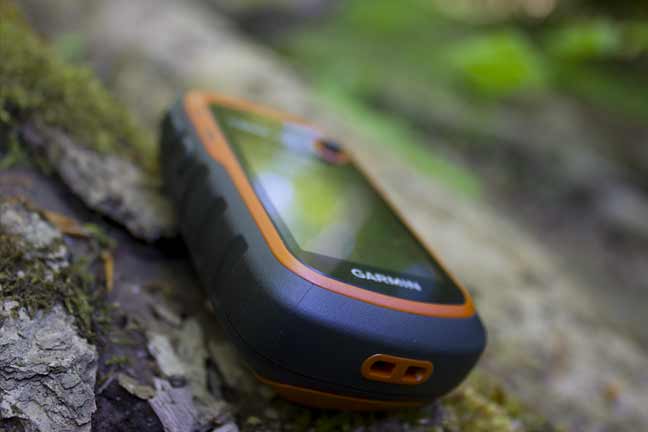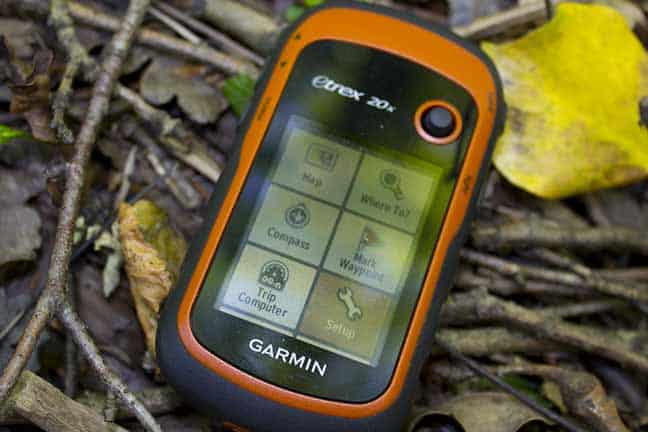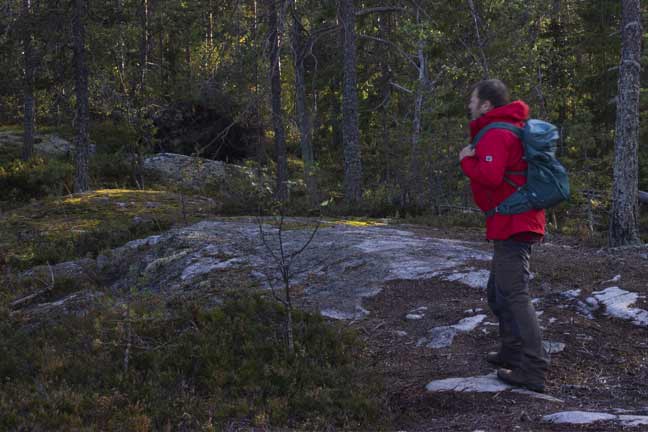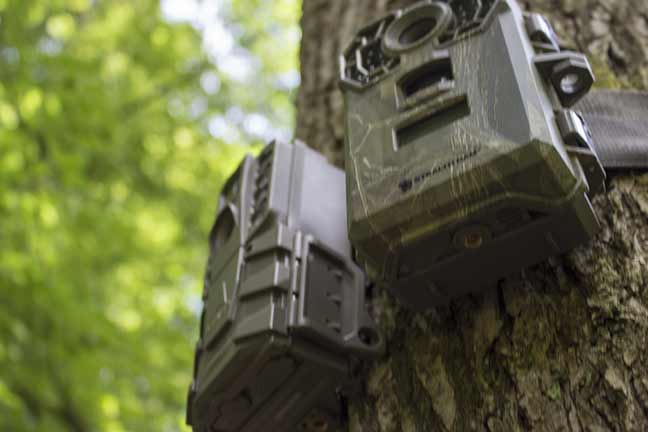This page may have Commerce Content. If you buy something from our posts, we may get a small share of the sale. Click here for more.


Editor & Article Writer for Outdoor Wilds
Best Hunting GPS Under $200
This article is a comprehensive guide to the best hunting gps under $200 currently on the market.
Getting hold of the right portable GPS device could make a huge difference to the quality of your hunting trips from now on.
So, what factors should you take into account when deciding which is the best hunting GPS under $200 for you?
Before we look at specific models, the first issue to consider is that of why you need a handheld GPS in the first place.
Well, this sort of device can be vital in helping you to safely and comfortably navigate steep or unfamiliar terrain.
It will let you see exactly where you are even when you are caught up in the thrill of the chase as you trek through new territory.
Waypoints
You can also mark important waypoints such as tree stands, and make notes about how best to use them. For instance, you can note important details such as which locations are best for varying wind conditions.
Another advantage is that you won’t need to use large flashlights or orange markers at night to guide you on your hunting trips.
Handheld GPS units make an ideal companion to using a dedicated hunting app on your smartphone too. I always carry my Garmin eTrex 20 in my trail camera field kit when heading out into the wilds.
Geographical Features
There will be no risk of getting lost out in the wilderness either, as you can locate key geographical features such as streams, fields, and trails very easily on the GPS. In addition, you can mark where your vehicle is parked so that getting back to it again is a hassle-free experience, plus you can locate your trail cameras and other features with ease.
I have written a guide here on what to look for when looking to buy a GPS unit.
Following that I have included 6 top tips when using your device, which I think you’ll find very useful once you have the unit to hand.
Popular Posts
As an Amazon Associate I earn from qualifying purchases. Thank you for helping to support the site.
Last update on 2025-05-07 / Affiliate links / Images from Amazon Product Advertising API
The Garmin eTrex 20XT is a tough looking device that delivers a high level of performance for a modest price, making it our best buy in the category of best hunting GPS under $200.
This is an upgraded version of the popular eTrex 20 and it retains the resistance to dirt, water, dust, and humidity of the previous model.
Since the display is a vital part of any GPS, it is good to see that it has a 2.2”, 65k color display with a resolution of 240 x 320.
Display
You can read this display easily in different lighting conditions. Interestingly, the eTrex range is billed as offering the first-ever GPS devices for consumers that use both GPS and GLONASS satellites for faster, more accurate readings.
A worldwide basemap is pre-loaded. With 3.7GB of internal memory and a microSD card slot there is plenty of space for adding additional maps. In terms of hunting use, the high degree of sensitivity and accuracy means that you can find your location incredibly quickly, even when you are in an area of heavy cover or deep in a canyon.
Pros
- High degree of accuracy and sensitivity
- Durable, robust design
- Plenty of space for adding maps
- Flexible and versatile
Cons
- More suited to the first time user
- 2.2 65k color TFT sunlight-readable display for clear views; Preloaded TOPO US Maps
- Large 3.7GB of internal memory houses a ton of map information
- WAAS-enabled GPS with HotFix and GLONASS for quick fixes
- Wireless capabilities allow you to share information with others
- Supports paperless geocaching GPX files for access to coordinates
Prices pulled from the Amazon Product Advertising API on:
Product prices and availability are accurate as of the date/time indicated and are subject to change. Any price and availability information displayed on [relevant Amazon Site(s), as applicable] at the time of purchase will apply to the purchase of this product.
Summary
You can use this GPS just about anywhere, with the option of using it as a handheld device or with any one of the range of compatible mounts. The Garmin eTrex 20x uses 2 AA batteries.
Garmin GPSMAP 64
Large memory capacity. Packed full of features. Plus a large colour screen thats easy to read.
With a rugged design and a 2.6” color display that is readable in sunlight, the Garmin GPSMAP 64 is a solid option for hunting trips even to remote, awkward locations.
The internal memory is a very decent 4GB and it comes with a built-in microSD slot.
Battery life is very good at 16 hours. In fact, it uses a dual battery system to make life easier for you.
Batteries
This means that you can power your GPS with 2 AA batteries or alternately with the rechargeable NiMH battery pack.
You get a lot of versatility with this device, as you can upload data to Garmin Connect to view on your smartphone, share activities on Live Track, receive Smart Notifications, and pair it with ANT+ sensors.
This is a high sensitivity receiver that uses both GPS and GLONASS with quad helix antenna. This gives you fast and precise readings that won’t let you down.
It comes with 250,000 preloaded caches for paperless caching from Geocaching.com.
Pros
- Fast and accurate
- Good range of uses adds to versatility
- Dual battery system
- Easy to read screen
Cons
- Not everyone likes the pre-installed software
Summary
You can plan your next hunting trip on your computer screen and then this GPS will record the details of the entire adventure for you.
Magellan eXplorist 350H
Loaded with many hunt specific features straight out the box, making it an ideal choice.
As it is marketed as being designed for the hunter, you can expect some useful features on the Magellan eXplorist 350H. Among the things to look out for are over 30 hunt-specific waypoint icons and hunting boundary information for 40 states.
Waterproof Rating
It is sturdily built for outdoor use and is waterproof with an IPX7 rating. The highly sensitive SiRFstarIII GPS has a 3 to 5 meter accuracy. You also get a free subscription to DigitalGlobe satellite imagery for 1 year with this GPS.
In terms of battery consumption, the 2 AA batteries that it uses should keep it going at least 18 hours. It also comes with enough pre-loaded maps to get you started and a hunting calendar to ensure that you only go hunting at the times of year when it is legal to do so.
Pros
- Lots of hunt-specific features and information
- Long battery life
- Free year’s subscription to satellite imagery as well as pre-loaded maps.
Cons
- May be tricky to use at first for some people
Summary
The screen size is 2.2” and it weighs just 0.9lbs. A nice set of tough-looking buttons with a joystick means that controlling it is easy even when you are out and about in the thick of the action.
Bushnell Bear Grylls Edition BackTrack D-Tour
A small and lightweight no fuss handheld GPS unit, ideal for hunters, hiking and mountain biking.
This Bear Grylls edition hunting GPS promises to let you keep track of every trip you make. It can be used to mark up to 5 locations and includes details such as time, altitude, temperature, and a digital compass.
The Bushnell BackTrack D-Tour is built to be weather-resistant. The screen is pretty small at 1.625 x 1.625 and it weighs just 0.25 pounds even with batteries in it. It runs off 3 AAA batteries and is a fairly basic, easy to use tracking device that can help to keep your hunting expeditions on track.
This handheld GPS device uses Windows (XP SP1 or better) or MAC (10.4.9 or better). It also comes with a 1-year limited warranty. It isn’t specifically targeted at hunters, but it can be used for this purpose, as well as for hiking, biking etc.
For hunters, it is especially good at helping you to keep track of territories.
Pros
- Easy to use
- Share or save information with no fuss
- Small and lightweight
Cons
- Screen may be too small for some people’s taste
Summary
You can use this device to easily share or save your data. For instance, you can share it over social media or email, as well as save it to a computer.
Garmin eTrex 30x

An impressive memory size, along with a clear to read screen, plus a huge track log up 10,000 waypoints.
This powerful, attractively designed device is our recommendation as the best hunting GPS under $200. The clear screen has a 2.2” 65K color display with 240 x 320 pixels.
It can be read easily even in strong sunlight. The track log can hold up to 10,000 points and 200 saved tracks.
The internal memory of the Garmin eTrex 30x is an impressive 3.7GB. Together with the presence of a microSD slot, this means that there is plenty of room for extra maps in addition to the pre-loaded worldwide basemap.
The fact that is uses both GPS and GLONASS satellite information means that you will get the details you need quickly and accurately no matter where you roam
Built-in sensors include a 3-axis electronic compass and barometric altimeter that tracks the changes in the air pressure around you to calculate your altitude with precision.
Pros
- Excellent range of features
- Accurate, fast tracking
- Lots of internal memory
- IPX7 waterproof rating
Cons
- I can’t think of any for this price
Summary
You can also use this device on a wireless basis, to share information with compatible devices. 2 AA batteries are needed to run it and the whole thing weighs just over 0.3 pounds even with batteries in it.
Overall Summary of the Best Hunting GPS under $200
All of the GPS devices that I have looked at offer great value for money. You can head out hunting more confidently when you pack one of these units.
As for the Top Pick in this review. The Garmin eTrex 30x wins this award and the Garmin eTrex 20XT is my Best Buy as it’s a fully featured unit at a great price point.
Popular Posts
What is GPS? - Beginners Guide

The term GPS stands for Global Positioning System. It is a system that logs spatial data wherever you go and is especially useful when you are out in the wild. Handheld GPS devices can be used to accurately determine where you are and where you have been.
All of this means that they are ideal for a variety of adventurous outdoor activities including hiking, hunting, and wild camping. Of course, if you get lost or run into bad weather conditions then they give you a safe and reliable way back to civilization, even if you are in an area without a mobile signal.
Why Use a Handheld GPS
You may wonder what advantages this type of device has over a paper map or even your smartphone. The truth is that a GPS device has a range of unique features that set it apart.
For a start, it is designed for outdoor use in extreme conditions. Portable GPS devices tend to be rugged and weatherproof, while a very long battery life compared to smartphones and tablets means that you are less likely to run out of juice far from home.
Before you leave home, you can hook up your GPS to your computer in order to install detailed maps and plan your route. Once you are outdoors the device will constantly display your position relative to your destination.
Of course, it always advisable to take a paper map and compass as backup too.
What Functions to Consider When Buying a Handheld GPS
If you are looking at choosing the best GPS for your needs, then there are a few basic features that you should bear in mind.
- GPS position. All good models offer this, but some also offer OS grid references, altitude, and the distance to the next waypoint.
- On screen mapping – You will want to check that the device offers the correct scale of map and that you can load the exact maps that you need for the areas where you want to go hunting. Some come with pre-loaded maps and in other cases you may need to download the maps that you are going to use.
- Batteries – Devices with bigger screens and more features will tend to consume more power. You should check the expected battery life and find out what batteries the device takes.
- Waterproofing & Durability – Most good GPS devices can deal with rain and some can even be fully immersed without damaging them. Check the waterproof rating to see what it can handle.
- Memory – Ensure there is enough memory to carry the maps needed. Does the device have an external memory slot you can use or is it internal memory only?
- Magnetic compass – Some of the best models have a magnetic compass that shows which direction you are facing. Without this, you will have to move a short distance in order to see in which direction you are headed.
- Camera – A GPS with a camera will mean that you may not need to carry an extra camera on your trips. Photos are typically tagged with the exact geo-location. As with any camera, the higher the number of megapixels the better.
- Connectivity – What connectivity options does the device have? USB is the most common, and this lets you hook up to a computer in order to add maps and share information. Some models also come with the option of communicating wirelessly with other devices.
- Waypoints & Routes – How many waypoints and routes does it let you store? Some long hiking routes use many waypoints to cover the route. If you are going to be using it for several days on a long expedition, then you may use up all the waypoint storage before you arrive.
- Accessories – It is also worth checking what accessories are available. If your GPS comes with a charger for the car, different storage options, a rugged case or a belt clip then this will add to its flexibility and usefulness.
- Weight – The best handheld GPS devices are nice and light. Naturally, this is always a consideration for long trips in which you don’t want to be weighed down by hefty pieces of equipment.
- Screen – Is it a touch screen or push button operation? You will also want to see how well it performs in bright sunlight as well as darkness. It important that you check the screen resolution to see how clear and easy to read it is.
6 Top tips when using a handheld GPS
Resetting to the live map screen
When navigating using the Garmin devices if you move the joystick while in Map mode, i.e the map is live and you can see your progress indicated by the cursor. The device will stop giving live updates to your location on the Map screen.
To return to live location updates, pressing the Quit / Back button on the Garmin push button models such as the etrex range and the Map64.
Changing the default track colour
A very useful feature on all GPS units is the ability for it to record a “Track” of where you have been. This is just as useful as showing you in which direction your heading in most cases.
The track is indicated by a solid coloured line in the case of the Garmin units. This line can be viewed in the Garmin Basecamp software on your desktop computer or on the units screen itself.
By default the solid line on the Garmin units is a very pale blue colour. To change the default colour to say orange, go to the main menu and select “Track Manager” in there will be an option to change the colour.
Hibernate Mode
Some of the units have what’s called a hibernate mode. This is very useful for when you enter a building. The reason being is that while in the building, in most cases the unit will lose a satellite signal. In doing so it will be searching constantly to reconnect with the satellite.
This does drain the battery quickly. So its best to put the unit in hibernate mode and once outside just press the ON button to re-active connection to the satellite.
Types of batteries to use in your handheld GPS
Most handheld GPS take AA size batteries. Try and avoid using alkaline batteries especially in very cold temperatures, as they will drain quickly. I always use Lithium batteries in my unit but a quality rechargeable battery is also a good choice and of course better for the environment.
Also with rechargeable batteries always try and use ones with at least 2300 mAh output. This will ensure the best performance from this type of battery in colder conditions.
Change the battery type in settings
As with most handheld GPS, particularly the Garmin units, you will need to go into the settings and change the battery type to suit the ones you are currently using. This can be found under the spanner icon that represents settings on the Garmin unit.
So for example you’ve been using rechargeable batteries in the summer, when winter arrives you decide to switch to lithium, just go into the settings and change the battery type.
The reason for this change in settings, is the unit will perform better under the correct matching types. Otherwise you may experience shorter battery life and even the screen freezing as the unit is not set to the correct voltage.
Set the backlight for the current lighting conditions
All modern handheld GPS units allow you to adjust the backlight illumination. Make sure in bright sunlight you have it set to the highest setting and of course at night you can set it to the minimum setting to conserve battery life.
The backlight timeout setting is also very useful too. This will turn off the screen a set time after you have been using the unit.
Software updates
A handheld GPS unit is just like a mini computer so it will need updates from time to time. Garmin use their Express software to make sure your unit is up-to-date when connected via a USB cable.
It’s very quick to update, in most cases it only takes 30 seconds at most. So always check on a monthly basis that your software is up-to-date.












